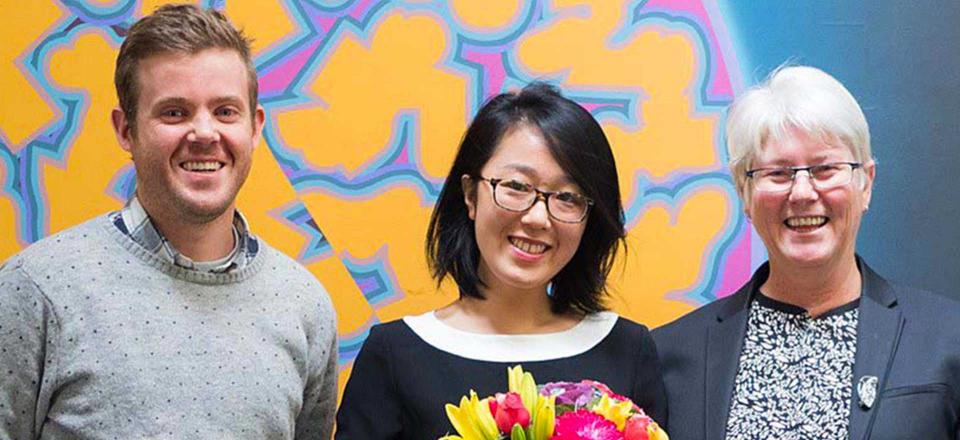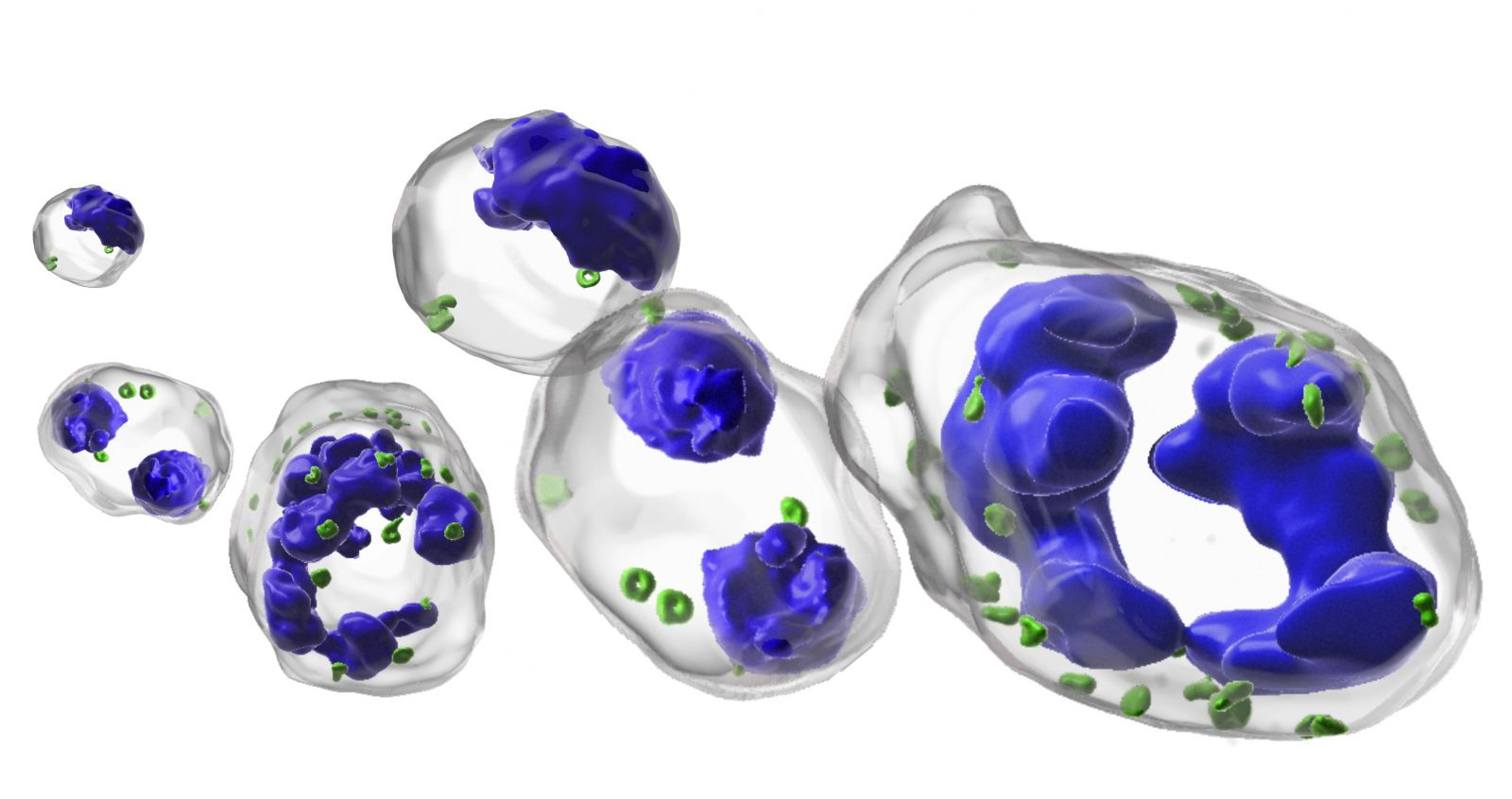Malaria parasites stop eating to avoid artemisinin antimalarials

27 November 2019
The frontline artemisinin antimalarial drug class is being compromised by emerging resistance, putting at risk the lives of hundreds of thousands of children each year. Clinical resistance to artemisinins is associated with mutations in a malaria parasite protein, called Kelch 13 (K13). Published in Cell Reports, a study led by Dr Simon Cobbold and Prof Leann Tilley, Bio21 Institute, University of Melbourne, has now revealed the mechanism by which K13 mutations cause resistance.
Malaria parasites hijack host red blood cells and use a cytostome (mouth) to feed on the host cell haemoglobin. Dr Tuo Yang, Ms Madel Tutor and other members of the team showed that K13 is located at this “mouth” and that K13 mutant parasites have lower levels of K13, and exhibit partial disruption of the parasite’s digestive processes. Digested haemoglobin releases free haem – the red part of haemoglobin – and this free haem is needed to activate artemisinin to initiate a cluster bomb-like attack on the malaria parasite.
By going on a haemoglobin-reduced diet, the parasite avoids artemisinin activation rendering it resistant to this front-line antimalarial. The team made excellent use of the proteomics, metabolomics and imaging facilities at the Bio21 Institute to unravel a mystery that has puzzled researchers for the last decade. A fuller understanding of the resistance mechanism will underpin efforts to overcome resistance and to develop alternative antimalarial strategies.

Figure: Super-resolution optical microscopy images of the K13 protein associated with doughnut-shaped “mouths” called cytostomes (green) at the parasite surface. The parasite’s nucleus is shown in blue. K13 mutants reduce their haemoglobin consumption, which decreases activation of artemisinin. The resulting decrease in cellular damage underpins artemisinin resistance. Images generated by Dr Paul McMillan, BOMP.

